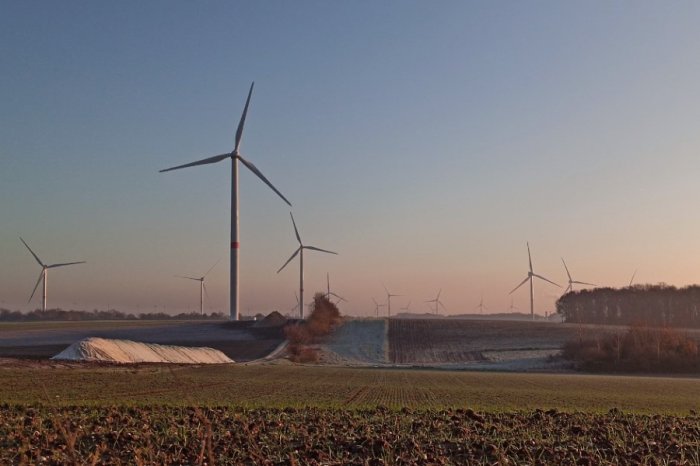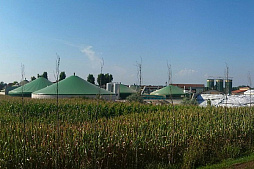Financing oil refinery construction and loans for modernization
Link Bridge Financial LTDA LBFL offers:
• Investment financing from $ /€ 5 million or equivalent and more
• Minimizing the contribution of the project promoter
• Investment loan term up to 20 years
• Credit guarantees
Currently, project finance for the construction of refineries and long-term loans for equipment modernization play an important role in the development of the industry around the world.
The economic recovery after the crisis requires significant supplies from the oil and gas industry.
This provides a powerful impetus for financing the construction and expansion of oil refineries (downstream), as well as for investing additional capital in the exploration and operation of oil fields (upstream) to ensure stable growth.
These are capital-intensive projects that start with the development of oil fields and end with high-tech oil refining and large-scale logistics projects.
The time interval between the initial investment in the oil and gas industry and the achievement of stable cash flows in some cases takes up to 10 years. Tightening environmental standards complicate the development of the industry, requiring companies to make new costly solutions to minimize harmful emissions. All of the above indicates that choosing the right sources for long-term project financing is critical to success.
Money is a valuable resource in times of high liquidity when interest rates are low.
Exporters of oil and petroleum products are in dire need of investment to maintain high productivity in the sector, provide national economies with fuel and prevent imports of petroleum products.
The lack of available funding sources in this situation can adversely affect the results of not only individual companies, but also entire sectors.
Link Bridge Financial LTDA LBFL is ready to provide long-term loans for the construction and modernization of oil refineries anywhere in the world.
Over the years, our company has supported financing large investment projects in Spain, Germany, France, Saudi Arabia, China, Mexico, Brazil, Argentina, South Africa and other countries.
We are always open to cooperation with large companies offering promising investment projects.
It is important for decision-makers to clearly understand the reasons that make it difficult to attract financial resources for the development of the oil and gas sector and use them effectively. These reasons are directly related to the internal mechanisms of corporate finance and capital markets. Our financial team will provide professional support and advice to customers at any stage of an investment project.
Principles and problems of financing the oil and gas industry
Oil and gas activities generally fall into two broad categories:• Upstream: covers any activity of oil and gas companies, from exploration of hydrocarbon deposits to their production (lifting to the surface).
• Downstream: activities related to the production of hydrocarbons and their subsequent transportation through pipelines, processing and sale.
An economic analysis of the activities of a particular oil and gas company (investment project) should take into account production and processing in general. Industry-wide, upstream activities cannot be adequately assessed without analyzing downstream activities.
Investment activity factors
The final price for hydrocarbons represents the intersection of supply and demand.However, in the short term, certain geopolitical processes (for example, military conflicts in oil-producing regions of the world) or large-scale financial changes can affect prices more than economic considerations.
The rumor of an imminent armed conflict in the Middle East immediately raises oil prices due to consumer concerns, even if the oil companies have not yet cut production. On the other hand, low interest rates are driving up the price of oil in the hope that the global economy will accelerate and spur demand.
It is important to bear in mind that not all hydrocarbon reserves are available for immediate production. For example, probable reserves account for a significant portion of the reports, so it is more correct to view actual production as a proposal.
The price of oil and oil products will ultimately be among the deciding factors (along with the potential of oil fields) when investing in oil exploration, production and refining.
The regulatory framework is also vital due to the long payback period for this type of project. This cycle can span up to 5 years for the construction of a refinery, or up to 10 years from the date of exploration to the sale of oil or gas to the market.
The hydrocarbon production and processing industry is a striking example of the economy of scarce non-renewable resources. The more oil and gas produced, the less hydrocarbons remain underground and the more difficult it becomes to extract them.
On the one hand, this makes oil and gas companies look for hydrocarbons in remote, hard-to-reach areas. On the other hand, refineries are increasing the efficiency of crude oil refining and require periodic expensive modernizations, which further increases costs.
This is a distinctive feature of the oil and gas industry, which adjusts prices based on demand (as in most sectors), as well as on the basis of natural resource decline.
Obviously, maintaining a growing or at least constant supply requires huge capital investments over many years. In this context, the correct choice of sources and instruments for financing large investment projects becomes fundamental for the economic viability of each company.
Refining efficiency as the key to business success
Oil refining is a manufacturing process that converts crude oil into valuable commercial products.This production is focused on markets that consume distilled products such as naphtha (light product); kerosene, diesel and fuel oil (intermediate products), and heavy products that are used for the production of asphalt and lubricants.
The refining process also produces liquefied gases, including butane and propane.
Refinery efficiency is essential to maintaining high profitability. For example, heavy fractions can account for up to 40-45% of all refined products. If the residual oil is not used (for example, for the production of lubricants), the economic efficiency of the entire process will be low.
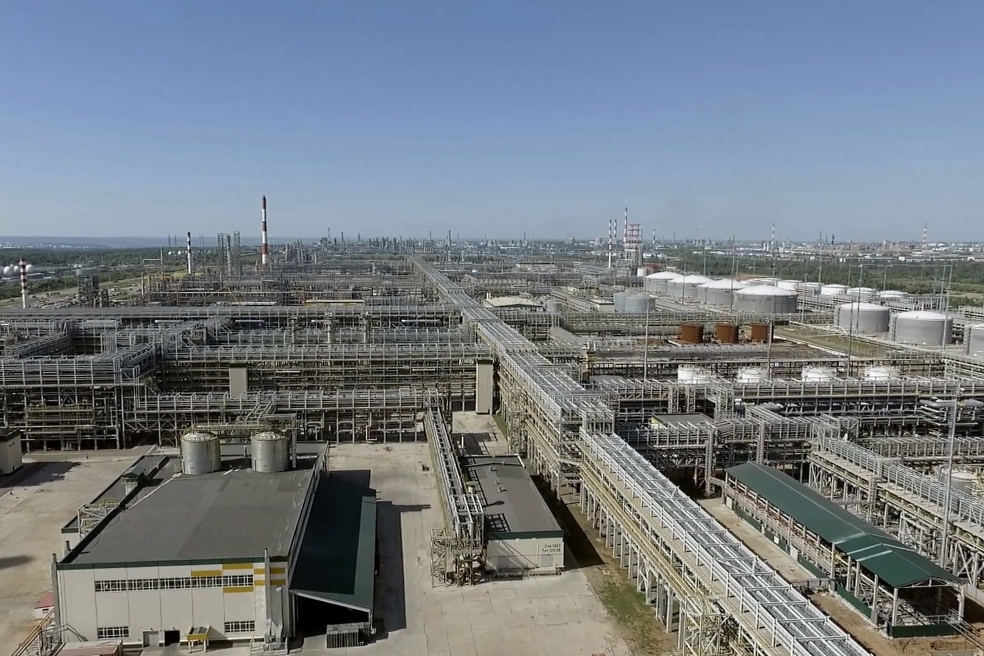
When constructing a refinery, it is vital to design the process line in such a way as to maximize the use of raw materials and reduce the amount of waste. However, the most profitable products of crude oil refining today are high-octane gasolines, diesel and, to a lesser extent, fuel oil.
Undoubtedly, the financial performance of an oil refinery is strongly influenced by the structure and characteristics of light oil products such as gasoline and diesel.
Naphtha and diesel are mainly used in land transport and clearly dominate this market with limited competition as ethanol and alternative biofuels still have a small market share.
Jet fuel used in aviation is also a profitable product. Fuel oil is widely used in maritime transport or as a fuel for power generation. Previously, this fuel often competed with coal, but after developed countries refused to use this fuel, the situation in this market changed. However, heavy fuel oil still competes with natural gas, hydropower and nuclear power.
Historically, refining has been one of the most volatile in the hydrocarbon sector.
Refineries are absorbing the gap between upstream and downstream activities and also responding to demand at the end of the supply chain.
In addition, the industry has to constantly adapt to legal requirements that are rapidly changing against the backdrop of the global energy transition.
Refinery can experience significant pressure on profitability during periods of high oil prices, as companies find it difficult to pass on cost increases to the buyer. The low profitability of refineries in the past decade has led to a situation where funding for the construction of new facilities has practically stopped. In many countries, refineries operate at minimum capacity. On the other hand, funding for the modernization of production lines continues as improving efficiency and maintaining environmental standards are vital to the industry today.
Investments in oil refining are mainly aimed at introducing technological advances, as well as overhauling existing refineries.
Very few projects are aimed at building new refineries.
The problem in this sector is more in managing working capital to finance complex day-to-day operations than in raising long-term financing, as is the case in oil exploration and production.
Corporate finance for oil and gas companies
A typical problem for any oil and gas company is to attract sufficient financial resources on acceptable terms at the right time to start and develop activities.Solving this problem allows businesses to conquer markets, build competitive advantage and thrive in times of economic uncertainty and global transition to a green economy.
Corporate finance refers to raising and managing the financial resources of a business.
This area of finance answers three main questions that will aim to create added value for business owners and shareholders:
• What are the long term financial needs of the company / project?
• How can a company raise funds to finance the construction or modernization of a refinery?
• How much money does the company need to pay off short-term liabilities?
The above issues are within the competence of the CFO of the company and are closely related to other aspects of his professional activity.
Experts in this field help create business value with the help of experienced financial advisors and specialists from related fields, internal and external.
Our financial team helps clients choose and use bank loans, bonds, stocks and other debt financial instruments wisely, so that the planned projects generate as large a cash flow as possible. The financial statements of oil and gas companies have a number of unique items, and financial management in this area is significantly different from other companies.
Professional capital management used in day-to-day and short-term operations of an oil and gas company, along with effective investment planning, ensure long-term business success.
Financial assets
In the broadest sense, an asset is any property that has exchange value.Financial assets or financial instruments are intangible assets, the value of which is a future cash liability.
The issuer of a financial asset is a company or person that receives money from an investor by transferring ownership of a financial asset under an obligation to make payments to the owner of the asset (the investor).
Some examples of financial assets in the oil and gas sector are listed below:
• A loan from a bank or other financial institution.
• A bond issued by a private company to finance its operations.
• A bond issued by the government to finance strategic projects.
• Share issued by a joint stock company.
The key economic principle is that the price of any financial asset is equal to the present value of the expected cash flow, even if this future flow is unknown.
The expected return on a financial asset is directly related to its price.
The type of financial asset, be it a debt instrument or a share, together with the financial parameters of the issuing company determine the degree of confidence of the investor (lender) in the expected cash flow. The less certainty, the higher the risk.
The following are the types of risks associated with the financial assets of oil and gas companies:
• Inflationary risk associated with a significant decrease in the purchasing power of the expected cash flow over time.
• The risk of default due to the inability or unwillingness of the issuer to service its debt or pay dividends.
• Exchange rate risk associated with the deviation of the foreign exchange rate from the previously planned corridor.
Any investment risk in the construction of an oil refinery is interconnected with the expected profitability of a particular project.

The more risky the asset, the more income the investor will require in order to invest his money in this financial asset.
Financial assets serve two economic functions.
First, they redirect financial resources from market participants who own surplus resources to those who need them to invest in assets.
Secondly, a well-designed portfolio of financial assets ensures a rational distribution of risks between the parties.
The financial team of Link Bridge Financial LTDA LBFL helps manage the financing of oil and gas projects, attracting resources on the most favorable terms. The effectiveness and feasibility of our investment models can be applied to the construction of large projects of factories, power plants, treatment facilities and infrastructure facilities.
Financial markets
The financial market is an important hub for the exchange of financial assets for oil and gas companies.Access to this market allows participants to trade any financial asset, regardless of whether they are debt instruments (contractual obligations involving the repayment of corporate loans) or equity instruments (company shares).
Financial markets perform three functions in the development of oil and gas projects:
• Ensuring effective interaction between buyers and sellers, in which the price of the traded asset is established. At the same time, they determine the profitability of a financial asset based on the market situation.
• Providing a mechanism for the investor's sale of financial assets, that is, ensuring its liquidity through a fair system of market trading.
• Reduced transaction costs. The main costs of companies in this case are the costs of searches (announcement of the intention to buy / sell financial instruments or search for a counterparty) and costs of information.
The so-called primary financial market is used for new issues, when governments and oil and gas companies sell securities for the first time (bonds in the case of governments; bonds and stocks in the case of corporations).
In this case, the funds raised go directly to the budgets of issuing organizations to finance subsequent investment projects.
After the placement of securities on the financial market, these instruments are traded on the so-called secondary market. The proceeds from the sale of securities in this market no longer flow to the original issuers. Its function is to provide liquidity to securities and make them easier to use.
Due to the globalization of markets, an increasing number of oil and gas companies have access to financing investment projects in the global financial market.
This is largely explained by the following factors:
• Continuing deregulation of markets.
• Increasing institutionalization of financial markets around the world.
• Impressive technological advances allowing participants to monitor financial markets.
With regard to the classification of financial markets, the most important for the oil and gas industry today are financial derivatives markets or capital markets where long-term financial assets are traded.
The peculiarity of the financial derivatives market is that the holders of securities have the opportunity / are obliged to buy or sell a financial asset in the future, and the price of a derivative financial instrument is closely tied to the underlying financial asset.
Long-term financing for the construction of an oil refinery
Long-term financing of large investment projects in the oil and gas industry is based on the issue of shares and long-term bank loans against the future cash flows of the projects.While the former financing instruments are more typical for private companies, the latter are widely attracting both state-owned oil refineries and private capital.
Issue of ordinary and preferred shares
Many companies use this financial instrument by issuing shares of various types to raise part of the funds for a capital-intensive investment project.A company's decision to go public can have serious long-term consequences for the current owners of the business. Therefore, in some cases, lending is considered a preferable, albeit expensive, instrument.
Ordinary shares have no priority for dividend payments or debt collection in the event of bankruptcy.
Shares, in fact, are parts of the capital of an oil and gas company, which are transferred to the hands of shareholders and give them certain rights.
In corporate finance practice, there are different classes of shares that differ in voting rights. Shares provide shareholders with rights that depend on the share of a particular shareholder in the company (project).
The following rights are distinguished:
• Receiving part of the company's profits in proportion to the number of shares.
• Receipt of the corresponding part of the assets of the company after its liquidation.
• The right to vote on strategic issues such as mergers.
• Preemptive right to purchase new shares.
Dividends paid to shareholders represent returns on capital that shareholders invest in an oil and gas company.
Dividends are not considered an obligation of the company until the decision to pay them is announced by the board of directors.
In accordance with generally accepted financial practice, dividends are paid out of the company's profits after taxes, so they are not taxed in most countries. However, after payment is made, shareholders must indicate them on their tax returns.
In turn, preferred shares have priority when distributing dividends or obtaining a share in the company's assets in the event of bankruptcy. Shares of this type give the holder the right to receive a fixed dividend per share, which is why they are sometimes mistaken for debt securities.
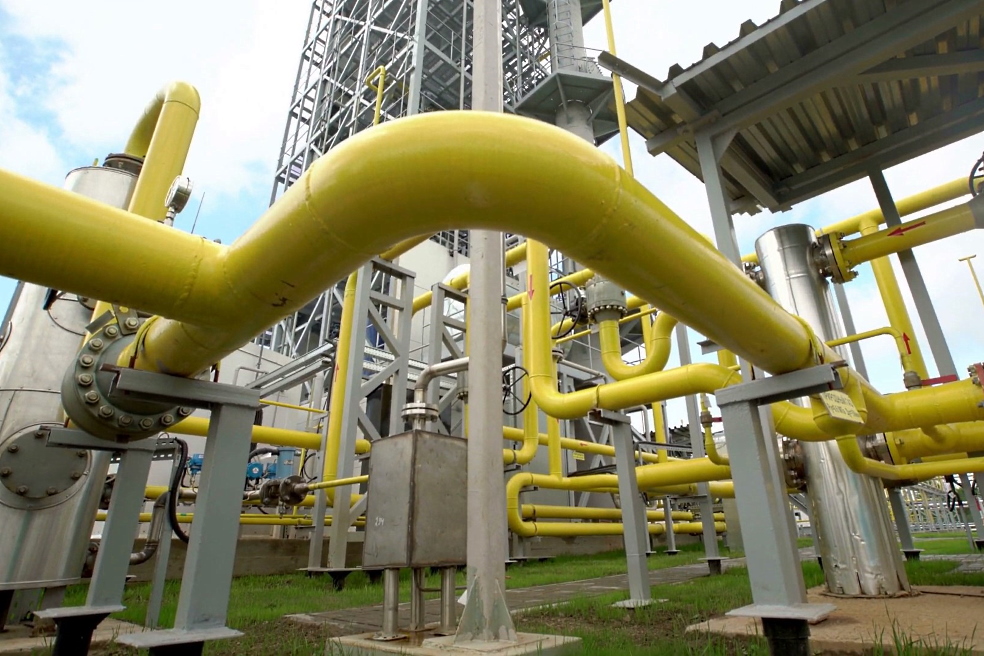
Unlike bonds, this financial instrument does not oblige the company to pay off the debt on time, without regard to the financial condition of the company. If the company has not made a profit for the reporting period, the board of directors may decide not to pay dividends to shareholders (including privileged ones). Sometimes dividends on preferred shares accumulate. That is, if during one year the shareholders do not receive dividends even if there is a profit, the balance may be increased the next year.
In addition, dividends on preferred shares cannot be deducted by the company from the income tax base, as in the case of servicing loans.
Also, the holder of preferred shares cannot claim bankruptcy of the company for non-payment of dividends, unlike a traditional creditor.
Long-term corporate debt
Debt is an obligation to the creditor that must be repaid with interest within a predetermined time frame.When companies take out a loan, they agree to pay interest as scheduled and repay the principal. Unlike dividends, interest must be paid according to the schedule, so it refers to the company's financial liabilities. The amount of debt is strictly limited by the loan agreement, in contrast to dividends, which are determined only by the company's profit and its financial strategy.
Debt does not give the creditor the right to manage or own the business; creditors are not allowed to vote or share in the profits of the company.
However, even if the company incurs losses, the loan will still have to be repaid.
Debt financing for the construction of an oil refinery can be obtained by issuing corporate bonds. These bonds can be secured by any asset (for example, structures, resources or equipment) or issued without collateral, which is possible only for the most attractive projects.
Although long-term financing is formally considered to be proposals with a maturity of more than a year, often this type of debt is issued for a period of 5 to 10 years. This time is quite enough for the construction of the refinery and reaching the design capacity under favorable conditions. Typically, corporate debt is repaid in regular installments (calculated according to a specific system, for example, French, German and American) by paying off the principal and interest.
Debt can be canceled before expiration using call options.
Sometimes creditors can be given priority status, which allows them to receive their money earlier than other creditors.
The public issue of bonds is carried out on the stock market, where several players can buy it at par. Then the bonds will be sold based on supply and demand in the secondary market, as well as the behavior of the interest rate.
Companies often pay rating agencies to assess their debt. These agencies will take into account the risk that the issuer will default on its obligations, and also evaluate guarantees for bondholders in the event of bankruptcy.
Private (non-public) placement of bonds of oil and gas companies, although it contains more restrictive provisions, is less expensive and is generally considered a more flexible solution. Private placement of bonds is carried out directly with one or more credit institutions.
The maturity of such bonds usually reaches 15 years.
The lenders are usually banks and insurance companies.
Finally, long-term bank loans are an important source of financing for the construction of refineries.
When it comes to large projects requiring investments of the order of hundreds of millions of dollars or even several billions, it is most appropriate to consider a syndicated loan. This is a loan provided by a group of banks joining financing efforts to minimize risk.
An example of such financing is a syndicated loan approved by the International Finance Corporation (IFC) in the 1990s for the construction of the Star Petroleum Refining in Thailand in the amount of US $ 350 million.
The total cost of this project exceeded $ 1.86 billion.
Project finance (PF) for the construction of oil refineries
The concept of project finance refers to targeted financing of large refinery projects and other facilities, which is based on the ability of the project itself to generate sufficient cash flows to service debt.This is a kind of off-balance sheet financing, when the project debt is separated from the financial statements of the originator and does not affect its creditworthiness.
In typical project finance, the collateral (security or guarantee of the lender against default by the borrower) is the project assets, but not the initiator's assets. A distinctive feature of project finance in comparison with direct financing (traditional loan) is that in the first case, the lender provides financing to the special-purpose vehicle, but not to the originator. The SPV / SPE institution financially separates the project from its originators.
Traditional corporate finance often does not specify the purpose of the loan or other borrowed funds.
Project finance allows lenders to better manage credit risk than if they lend money directly to the company for multidirectional business activities.
Usually, financing of the construction of an oil refinery is carried out using 70-80% of borrowed funds and, accordingly, 20-30% of the internal financial resources of the project initiators. Arranging project finance requires multilateral negotiations with stakeholders and the formation of a complex contractual structure. The cash flow of a specific project is seen as a guarantee of the return of funding.
Structured finance methods are part of project finance and help banks minimize their risks through securitization.
Basically, project participants are restructuring their loans into bonds (negotiable obligations) that they offer in the capital markets, pegged to the project's cash flows.
In the oil and gas industry, project finance has always been in great demand in the implementation of large projects. Its explosive growth began in the 1970s with the financing of oil production in the North Sea and Australia. Today, the PF gives petroleum producers access to affordable and flexible financing for large-scale refinery construction and modernization projects.

Link Bridge Financial LTDA LBFL supports project finance for the oil and gas industry in Europe, the United States, Latin America, East Asia, the Middle East and North Africa.
Contact us to find out more.
Loans for the modernization of refineries
Previously, it was believed that the main task of modernizing a refinery is to upgrade certain types of equipment and improve certain processes.Such activities, as a rule, are associated with the replacement or addition of existing equipment without changing the overall technological process.
In the modern sense, the modernization of refineries, first of all, consists in the organization of investment measures aimed at improving production through consistent constructive and organizational changes. These changes must be comprehensive to ensure that the enterprise fully complies with the organizational, technical and environmental standards of the industry.
In other words, the attention of management is shifted to the implementation of sequential investment operations aimed at the practical use of new scientific and technological knowledge in order to achieve commercial success.
In this context, the priority of refinery modernization should be focusing on the future, sustainable development through comprehensive transformations.
Such modernization should be based on the latest technologies in close relationship with the strategic goals of the company's development, given its current state (depression, relative stability or rapid growth).
It is important to emphasize that such activities cover not only production, but also facility management.
A whole range of innovations should be directed towards the rational use of crude oil, increased use of by-products and environmentally friendly production. Modernization can also be considered as a purposeful replacement of outdated elements of production and management activities.
Thus, the current view of modernization should cover the full range of interconnected links in improving production, the management system as a whole, the state of the environment, work with personnel, and expanding the range of products.
Investment planning
One of the most important components of the economic model is investment planning, which is determined by the mission, strategic goals, scientific, technical and investment policy of the oil and gas company.Our experts identify the following rules for the successful modernization of refineries:
• The general plan for the modernization should be formed by the management taking into account the long-term business development strategy.
• Investing funds in modernization is advisable only if the company will benefit more than from accumulating funds.
• Implementation of modernization projects should be carried out only when they are cost-effective, taking into account the time factor and the influence of inflation.
• The final decision on financing the refinery modernization is made in the event that the project provides economic benefits, taking into account the possible risk.
Specific areas of investment in the modernization of an enterprise can be determined only on the basis of a detailed analysis of the state of a particular facility.
The basis for investment planning should be a program-targeted approach, the basic principles of which include consistency, complexity, priority and timeliness.
The efficiency of real investments can be significantly increased by investing in improving the management system, as well as in the production and technological component. This can be explained by the fact that today the main component of competitiveness is the flexible response of the business to the needs of the market, and not the ability to produce large volumes of products.
Benefits of long-term loans
Sources of financing for modernization can be short-term and long-term lending, issue of shares, placement of bonds of various types, leasing, factoring and others.Practice shows that loans continue to play a decisive role in most of these projects.
To get an idea of the scale of the costs, it is worth remembering one of the recent projects to modernize the Refinería Talara refinery in Peru. The medium-sized complex, capable of producing 95 thousand barrels of fuel per day, required deep reconstruction and modernization at a cost of about 4.7 billion US dollars, stretched out in time for almost 7 years (2014-2021).
A significant part of the investments required for the implementation of such large-scale projects comes from commercial banks and their consortia, as well as international financial institutions.
In particular, the aforementioned project was partially through a long-term syndicated bank loan.
The application of these methods of financing projects in practice requires close attention to the following aspects. All projects of this kind are characterized by increased complexity of calculations. On the one hand, investments cover the costs allocated for a certain period of modernization.
On the other hand, investments in modernization projects often involve a fixed sequence of payments over a long period of time, introducing an element of unpredictability into the future of the company and the project itself.
Second, a company needs to consider a range of factors that hinder investment decisions. This includes the complexity of assessing the return on investment in modernization of the enterprise, the presence of discrepancies between estimates and actual information on the costs of modernization of the enterprise, as well as the complexity of assessing the effectiveness of the portfolio of modernization projects as a whole.
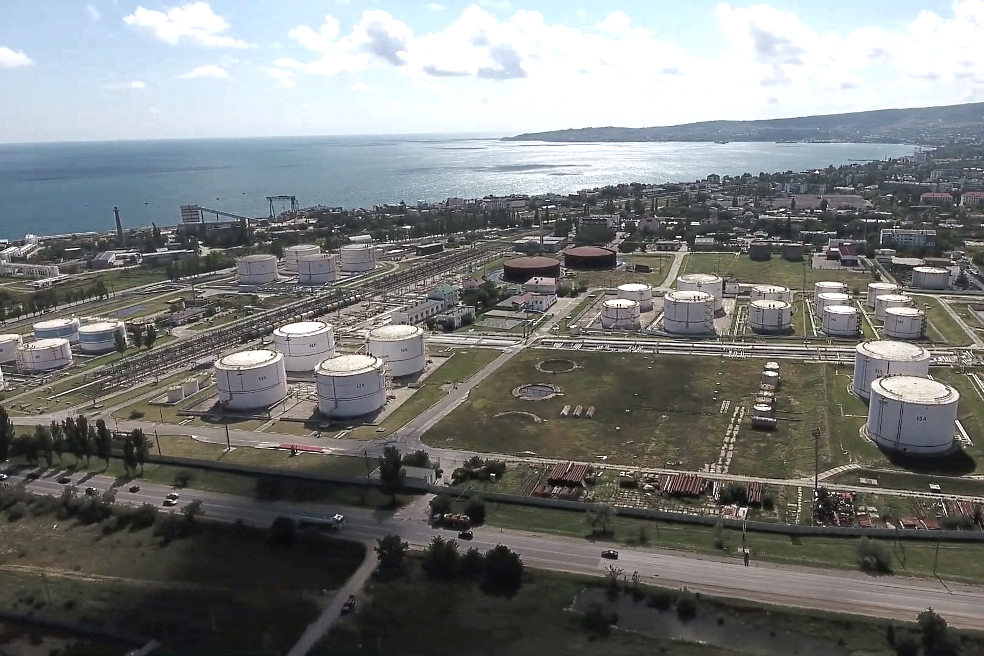
Long-term bank loans provide an oil and gas company with the following advantages:
• Long term financing.
• Possibility to revise the terms of the loan through negotiations with the bank.
• Loans on better terms when purchasing equipment from a specific supplier.
• Relatively simple and fast process of obtaining borrowed funds.
• Simple contract structure with a minimum of participants.
• Possibility of obtaining large loans within the consortium.
LBFL offers financing for large refinery modernization projects, including long-term loans from 10 million euros for up to 20 years.
Please contact our finance team for details.
Financing oil and gas projects on the best terms
The success of large projects in the oil and gas industry is based on the ability to generate stable cash flows over the long term.Deciding on long-term financing for the construction or modernization of a refinery is critical to business in a highly competitive environment.
The mission of the company's management is to make every investment decision as effective as possible and to find a way to implement an investment project that will bring the company a higher value. The subsequent operational phase of the project will require new solutions for financing working capital to ensure the operation of the refinery complex.
Traditional corporate finance can come from a variety of sources, such as equity increases, bond issues, leasing, lending, or various combinations of debt and equity financing. The finance department of the company must recommend the best alternative for the most acceptable investment solution (for example, the development of an offshore field or the construction of a refinery). Correctly selected financial models and sources determine the value of the future project.
The oil and gas industry today uses a variety of financing instruments to realize growing investment opportunities, increase profitability and reduce risks.
However, it can be challenging to obtain financing that is appropriate for a specific investment opportunity.
The presence of vast deposits and a growing market demanding more petroleum products are not the only factors for prosperity.
It is important for oil and gas companies to find a source of long-term financing with flexible terms, since the long construction time of refineries and high initial investment costs increase the risk and uncertainty for potential investors. Detailed study of all aspects of the project, professional financial modeling and negotiations with a wide range of stakeholders are important in this context.
At all stages of the project, companies need reliable financial partners and professional consultants who are ready to attract the resources on favorable terms and support the company's efforts.
Link Bridge Financial LTDA LBFL, a financial company with rich international experience, has been on the market for over 20 years.
We offer a wide range of services for business:
• Project finance services for the oil and gas industry.
• Advanced investment engineering, financial modeling and consulting.
• Services in the field of engineering, construction and project management.
• Loan guarantees and much more.
We support the financing of large projects in the field of oil production and refining, develop advanced financial models for our clients and offer professional services of asset managers, technical consultants and economists.
LBFL is supported by numerous reputable partners, including large investment funds, banks and other financial institutions, engineering companies, research institutes in Spain and other countries, as well as renowned manufacturers and suppliers of oil refining equipment.
If you are interested in financing the construction of oil refineries or are looking for a long-term loan for the modernization of equipment, please contact us at any time.




